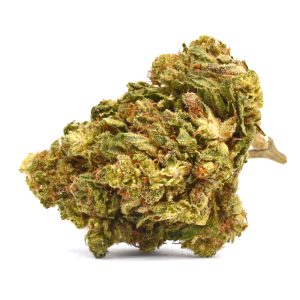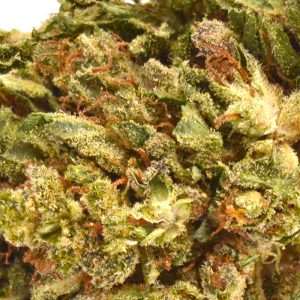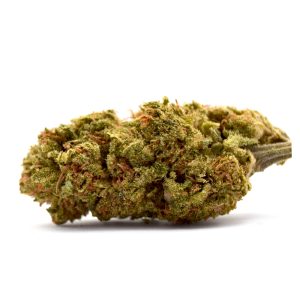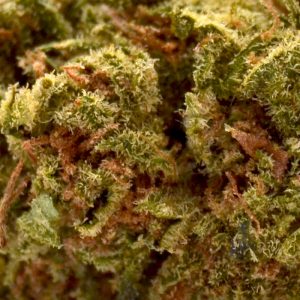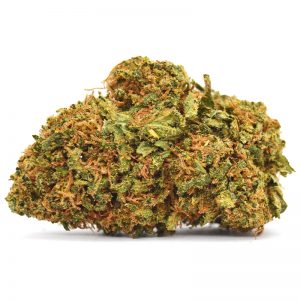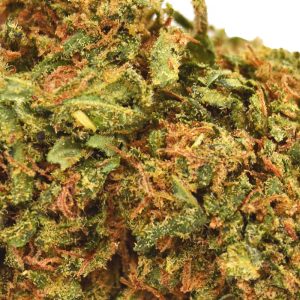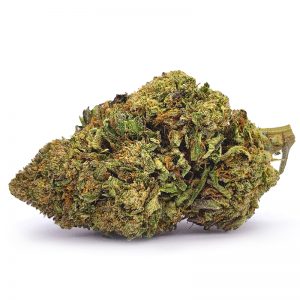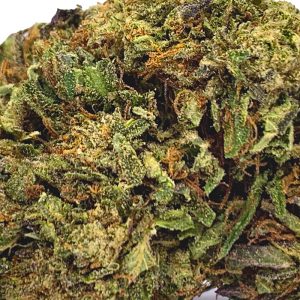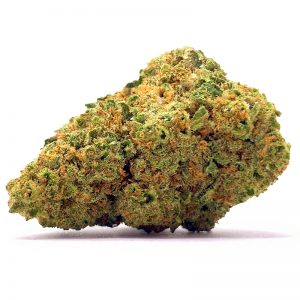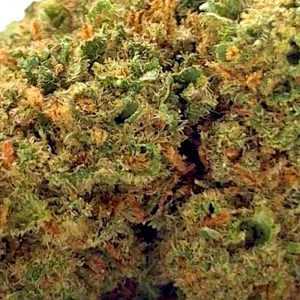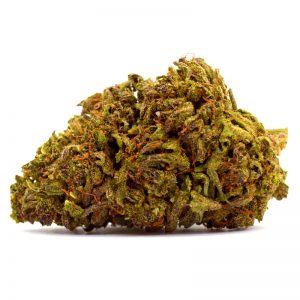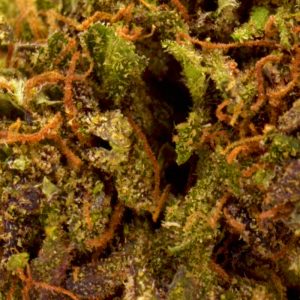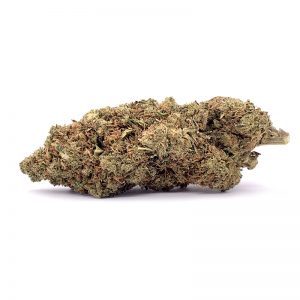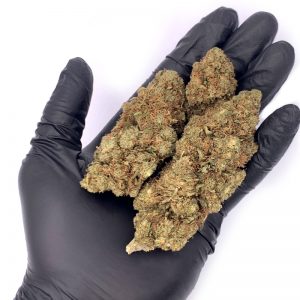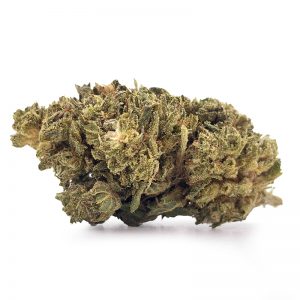CBD flower gets its refreshing scent from pinene (or α-pinene), the most abundant terpene in nature. Pinene is an aromatic compound found in the oils of conifers, such as pine. It exudes a woody and earthy aroma with pine and cedarwood tones.
While its flavor and aroma give CBD flower a refreshing boost, the best thing about pinene is its therapeutic potential.
Last Update: July 12, 2023
Article Summary
- Pinene is a monoterpene found in most CBD flower and cannabis flower strains. It’s a primary or secondary terpene in indica, sativa, and hybrid strains.
- This terpene is the most abundant aromatic compound in nature, primarily found in conifers like pine.
- Pinene’s aroma is associated with fresh pine forests, earthy and woody tones. There are two types of pinene: alpha-pinene, commonly found in cannabis, and beta-pinene, found in other herbs.
- It’s also known for its therapeutic potential, such as acting as an anti-inflammatory agent, aiding memory and respiratory functions, and potentially inhibiting bacterial and viral propagation.
- Mr. Hemp Flower offers various CBD flower strains rich in pinene, including Northern Lights, Green Goblin, Crunch Berries, and Lava Cake. All of these strains are cultivated under the highest standards by licensed US growers, which creates a richness of cannabinoids and terpenes.
- CBD flower strains rich in pinene are known for their invigorating effects, enhanced alertness, focus and uplifting mood. But, the overall effects of the strain can vary based on other terpenes present in the profile.
- While generally safe and non-toxic, exposure to higher levels of pinene can cause temporary upper airway irritation or allergies in sensitive individuals.
What is Pinene?
Pinene is a bicyclic monoterpene with two isoprene units — alpha-pinene (α-pinene) and beta-pinene (β-pinene).
It’s part of a broad family of chemical compounds naturally found in nature called terpenes. Pinene is the most abundant terpene in nature.
In CBD flower, high levels of myrcene or other terpenes may influence the effects displayed by pinene — energizing or relaxing. While the terpene myrcene is popular for its sedating effect, pinene is known to increase alertness.
Natural Sources of Pinene
Alpha-pinene is more common in cannabis, pine needles and rosemary, while beta-pinene can be found in basil and hops.
Other natural sources of pinene are eucalyptus, sage, lime, frankincense, and orange peel essential oil.
CBD Hemp Flower Strains Rich in Pinene
Many factors, such as weather, climate, and soil, can influence the development of terpenes in the cannabis plant.
Mr. Hemp Flower collaborates with licensed growers to bring you an expertly grown selection of hemp flower abundant in cannabinoids and terpenes.
Here are some of our best pinene-rich hemp flower strains.
1. Northern Lights CBD Flower
Northern Lights CBD flower is known for its comforting and mood-boosting effects. It presents a captivating blend of sweet, herbal, and pungent aromas and flavors — some of them coming from pinene.
Among the many terpenes found in this strain, myrcene, caryophyllene, and pinene play key roles in its overall impact. At 0.14%, Pinene infuses Northern Lights with a unique herbal, piney essence.
Known for its stimulating properties, pinene brings comfort and a calming sensation to the overall uplifting and relaxing features of Northern Lights.
2. Green Goblin CBD Flower
Green Goblin CBD flower is a strong sativa hybrid with a fresh, herbal aroma and skunky undertones. This strain is the ideal daytime companion that promotes focus and profound mental stimulation.
At 0.12%, pinene imbues this strain with a fresh, herbal aroma and an invigorating focus. This terpene balances myrcene’s pungent and skunky aroma (0.34%) and the musky scent of carene (0.18%).
Aside from the terpenes, Green Goblin’s potency lies in its harmonious blend of cannabinoids, including CBD (16.9%), THC and CBG.
3. Crunch Berries CBD Flower
Crunch Berries CBD flower is a powerful hybrid strain with a sugary, tart berry flavor with a hint of herbal and skunky tones. It entices your taste buds while enriching your body and uplifting your mood.
At 0.04% pinene, 0.12% myrcene, and 0.14% humulene, Crunch Berries hemp flower exhibits calming effects and a refreshing aromatic touch when smoked.
Behind the strain’s harmonious balance stands its rich cannabinoid profile featuring CBD (13.61%), THC, and CBG. This strain is best enjoyed in the evening as its soothing effects guide you into a comfortable rest.
4. Lava Cake CBD Flower
Delight in the Lava Cake CBD flower, a rare gem with a sugary aroma that transforms into a spicy flavor upon smoking.
This unique indica-dominant hybrid boutique strain makes the perfect companion for evening and nighttime relaxation.
At 0.04% pinene and 0.19% caryophyllene, this hemp flower stimulates a calm sense of focus. The pinene gives a scent reminiscent of a fresh pine forest after rainfall, while the caryophyllene adds a spicy touch. Geraniol (0.03%) has a floral-citrus essence that lends a subtle sweetness to this strain.
What Does Pinene Smell Like?
Pinene terpene smells like a forest of pine trees. This clear liquid is associated with the earthy, woody, and fresh aromas of pine [1].
Although very similar, α-pinene and β-pinene exhibit distinguished scents. Alpha-pinene has a pine-like or rosemary scent. Beta-pinene is earthy and fresh, still woody and pine-like, but with a bit more spice, similar to what you’ll find in parsley and basil.
What Does Pinene Taste Like?
Alpha-pinene has a strong taste and can be used as a food additive in minor concentrations.
Overall, a-pinene has a slightly bitter, earthy or herbaceous flavor. Some people describe its taste as pine tree sap (turpentine) or dirt with a hint of rosemary or pine nuts.
Pinene’s flavor can be tasted in certain strains that contain it in high levels, but most strains don’t carry that much of this terpene to affect the strain’s flavor.
Molecular Structure of Alpha-Pinene
Alpha-pinene is an organic compound of carbon and hydrogen atoms, classified as hydrocarbons. The molecular formula of this component is C10H16.
Although alpha and beta-pinene have the same chemical formula, they have different atom connectivity. Alpha-pinene contains two ring systems, a six and a four-membered ring.
Pinene has two isomers, both commonly found in nature. The 1S, 5S variant is more common in European pines, while the 1R, 5R isomer is more common in North America’s pines.
Pinene is a clear, colorless liquid. It is denser than water and also insoluble in water, with a characteristic turpentine odor. The vapor from pinene is heavier than air and is used as a solvent.
The amount of pinene produced in the plant depends on temperature and available sunlight. The monoterpene is emitted in larger amounts in nature, affecting temperature and light intensity.
What Are Terpenes?
Terpenes are organic aromatic compounds that give different cannabis strains distinctive odors and flavors.
They are available as small terpenes (monoterpenes), and large terpenes (diterpenes, triterpenes, and so on). Besides plants, other organisms, such as insects, marine algae, and sea slugs, also produce terpenes.
Terpenes in cannabis are potent compounds that play an important role in the potential healing effects of this plant.
Research shows that CBD flower and full spectrum cannabis products are more effective than isolates. The theory behind its effectiveness is the synergy or collaboration between terpenes and cannabinoids, also known as the “entourage effect.”
The reason why different cannabis strains produce different effects is because of their terpene profiles. Some terpenes promote focus and activity, while others relaxation and stress relief.
The Many Uses of Alpha-Pinene
Pinene is the primary component in many essential oils and is used in producing perfumes and deodorants.
Like other terpenes, it’s also used in aromatherapy and cosmetics, as it can be found in the essential oils of rosemary, orange peel, tea tree, and eucalyptus. Another widespread use is household cleaning solvents such as turpentine.
Potential Benefits of Pinene
Pinene is a monoterpene suitable for inhalation, hence its wide use for the treatment of infections of the respiratory tract.
Alpha-pinene is bioavailable, with a reported range between 54-76% following inhalation with quick metabolism and redistribution [2].
This means that the effects of the compound will be experienced quickly after inhalation. After absorption, according to studies, only 4-6% of the amount assumed to be absorbed was found in the blood [2].
It works in different ways in the body, but it mainly displays the following:
- Anti-inflammatory effect
- Bronchodilatory effect
- Antimicrobial properties
- Gastroprotective properties
- Anti-proliferative activity
- Antioxidant properties
Traditional healers have used pinene as a natural remedy for congestion or parasitic infections for centuries.
Let’s look at the evidence-based healing effects of pinene, which show how a small amount of the substance goes a long way.
1. Anti-Inflammatory Properties
According to research, alpha-pinene decreases the activation of immune cells that add to inflammation in body tissues in mice [3].
The anti-inflammatory activities of a-pinene are amplified if this compound works in synergy with other terpenes. For example, if used with b-myrcene, these two terpenes can be great for relieving physical discomfort.
2. Antimicrobial Effects
The synergistic efforts of alpha-pinene and beta-pinene have shown beneficial effects in the battle against the dangerous antibiotic-resistant strain of Staphylococcus aureus — MRSA — and bacterium Campylobacter jejuni [4].
Over the years, MRSA has become resistant to most common antibiotics. As antibiotic resistance rises, researchers must find other alternative compounds capable of killing these harmful bacteria.
Pinene may show potential as a natural addition to integrative treatment for antibiotic-resistant bacteria, but more research is needed.
3. Respiratory Benefits
Pinine is an effective bronchodilator.
This means that pinene helps open airways and improve airflow in the respiratory system, which can be of therapeutic value for people with respiratory ailments such as asthma.
4. Memory Retention
In the research paper Taming THC: Potential Cannabis Synergy and Phytocannabinoid-Terpenoid Entourage Effects, Dr. Ethan Russo explains that the most compelling activity of alpha-pinene is as an acetylcholinesterase inhibitor aiding memory [5].
This means that alpha-pinene works as an acetylcholinesterase inhibitor, reducing the activity of acetylcholinesterase to boost memory.
The potential of alpha-pinene in increasing memory retention could also counteract short-term memory deficits caused by THC intoxication.
The role of a-pinene in protecting short-term memory can also be due to the “entourage effect” or the synergy it has with other terpenes such as limonene, linalool, beta-pinene, and terpineol.
5. Gut Protection
An animal study showed that pure alpha-pinene reduced gastric ulcers in mice. This suggests that the gastroprotective effect of alpha-pinene may also work in humans if consumed at low levels, but more research is needed [6].
6. Insect Repellent
Terpenoids are frequently found in nature and serve as a plant’s defense mechanism against insects.
Pinene can be an effective insect repellent. When the plant secretes pinene, the odor keeps the insects away and reduces the frequency of insect attacks.
Potential Risks and Side Effects
Alpha-pinene and beta-pinene are non-toxic, non-mutagenic, and generally safe.
Both pinene isomers have been approved for safe human consumption and cosmetic application. Some people are allergic to alpha-pinene, which can be a skin irritant to sensitive individuals.
Studies have found that exposure to higher levels of pinene at the workplace causes upper airway irritation after inhalation. There were no long-term adverse effects as the irritation was reversed 6 hours after exposure [1].
This is a bit ironic, considering that a-pinene acted as an effective anti-inflammatory agent in mice with allergic rhinitis [1].
FAQs on Pinene Cannabis Terpene
Is pinene an indica or sativa?
Pinene is a terpene, meaning it’s a compound present in both indica and sativa hemp strains, as well as their hybrid variants.
What does a-pinene do?
Alpha-pinene carries numerous potential benefits as it can act as an anti-inflammatory agent, support pain alleviation and relaxation, assist in memory and respiratory functions, and potentially inhibit bacterial and viral propagation. Additionally, it provides a delightful flavor that enhances various cultivars.
What does pinene feel like?
Pinene is commonly linked with invigorating strains that aid in maintaining alertness and focus. You might discover that high pinene strains facilitate a dynamic, euphoric, or artistic cannabis experience.
Is pinene psychoactive?
Pinene is a fragrant compound that doesn’t bind to the brain’s cannabinoid receptors like THC. While it may not induce any psychoactive effects, it can enhance the mood and augment the uplifting effects of numerous strains.


